13 Charts That Show How Completely Broken The US Immigration System Has Become
Unauthorized immigrants comprise a major portion of the U.S. civilian labor force.

Close to 25 percent of farm workers, 19 percent of maintenance workers and 17 percent of construction workers were unauthorized immigrants in 2008.
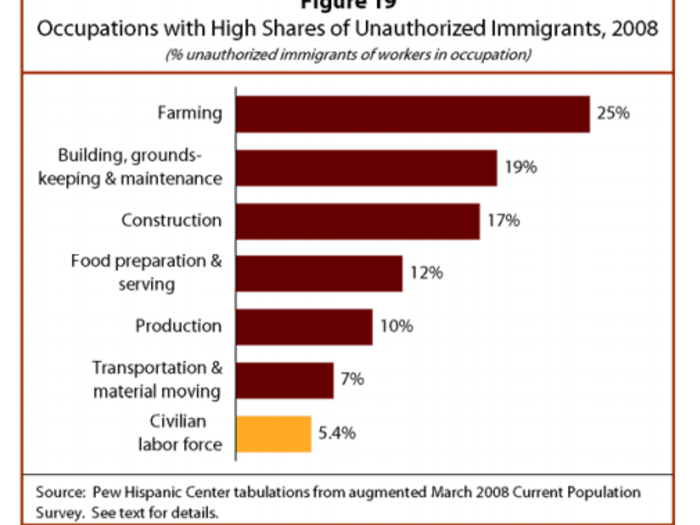
And in 2008, 8 percent of births in the U.S. were children with unauthorized immigrant parents. 24 percent were from immigrants of any legal status.
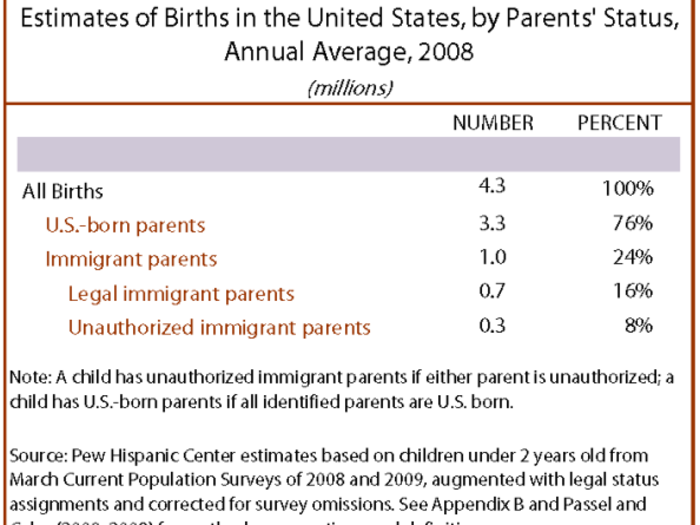
That is who is already here. But one major question with immigration reform is how to deal with the porous border?
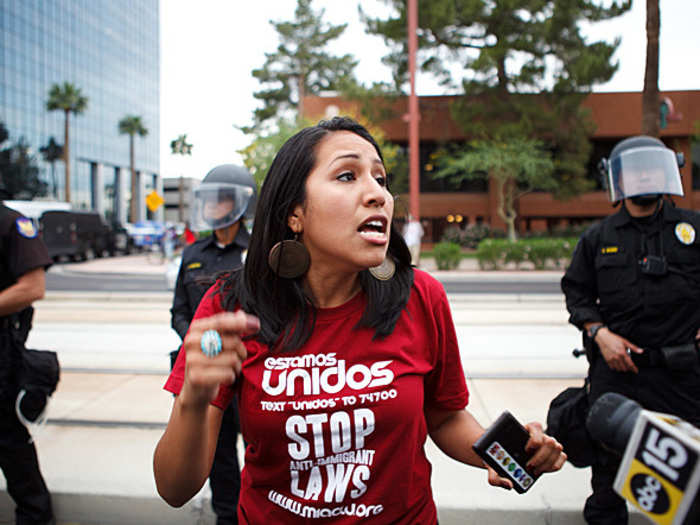
The Border Control's budget has been rising rapidly.
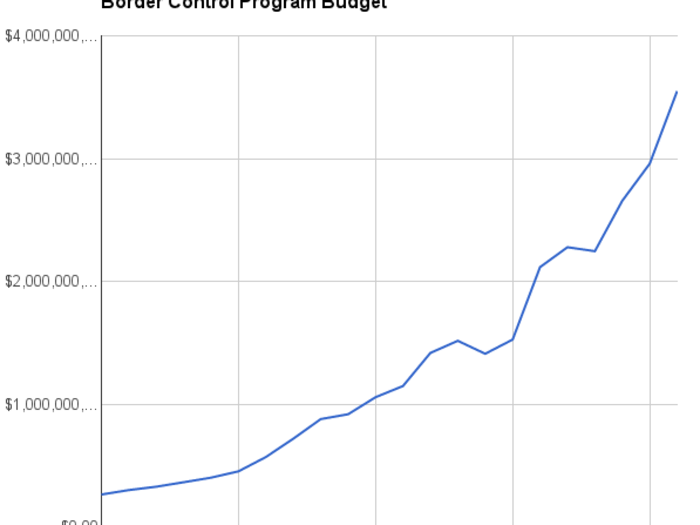
However, the reported number of annual apprehensions carried out by the Border Control has been decreasing steadily.
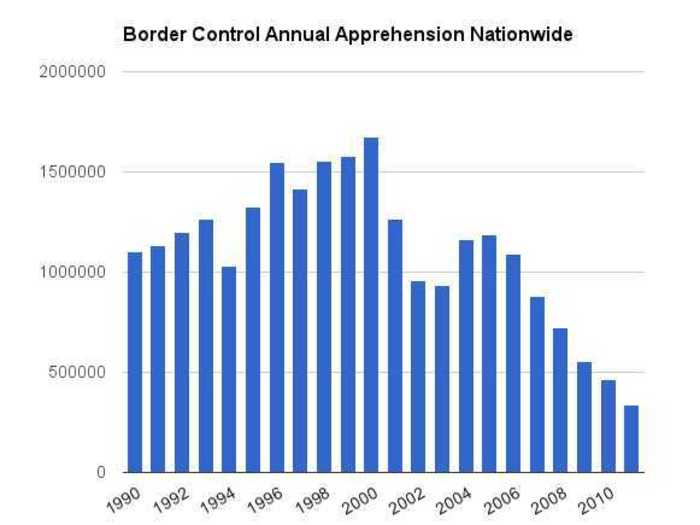
As a result, the cost per apprehension has skyrocketed from $238 per apprehension in 1990 to $10,431 per apprehension in 2011.
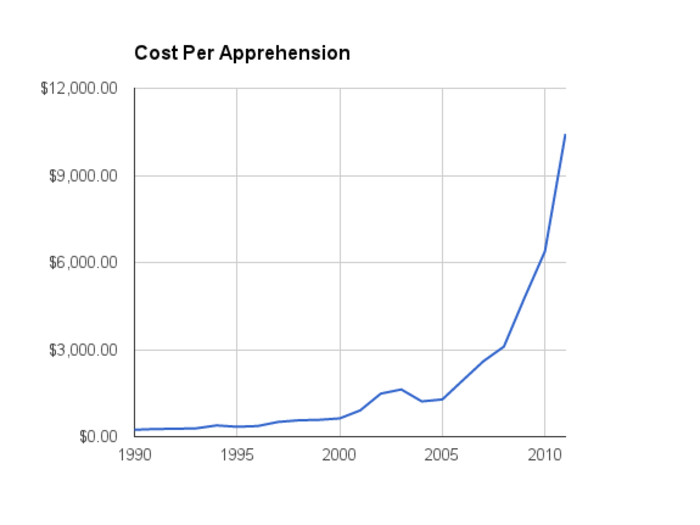
Border Control Budget, Apprehension
The number of immigrants held in Immigration and Customs Enforcement detention facilities is on the rise, and was almost 450,000 people newly jailed in 2011 alone.
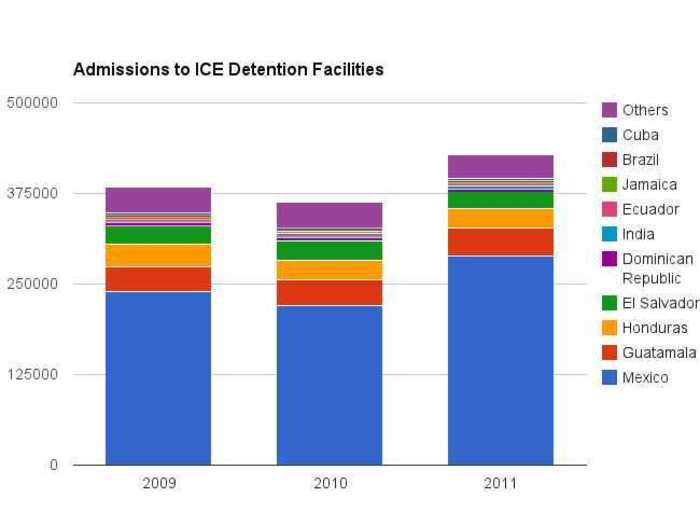
One issue is that it's become incredibly difficult for people to get residency in the United States, and even harder to become a naturalized citizen.
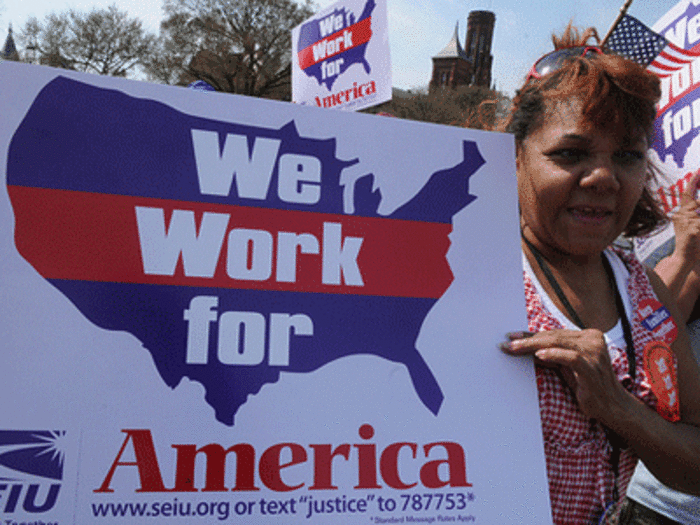
Until the early 1990s, less than 3 percent of petitions for naturalization were denied annually. Since then, denials have become much more common.
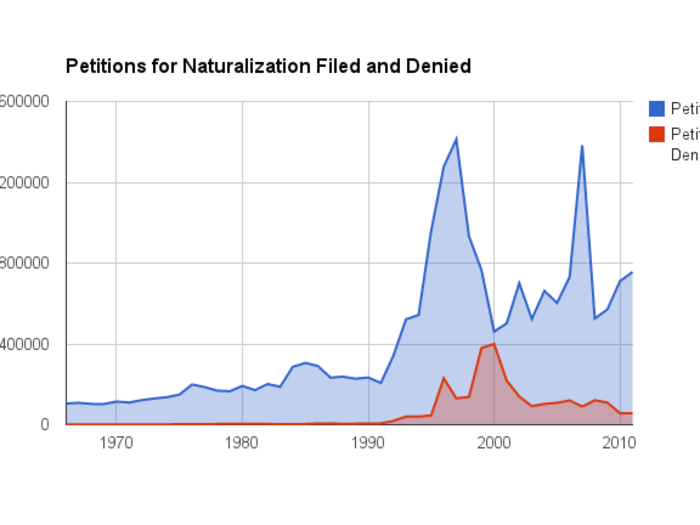
Petitions from people seeking to become naturalized citizens have been denied more often than ever in the past two decades, peaking in 2000.
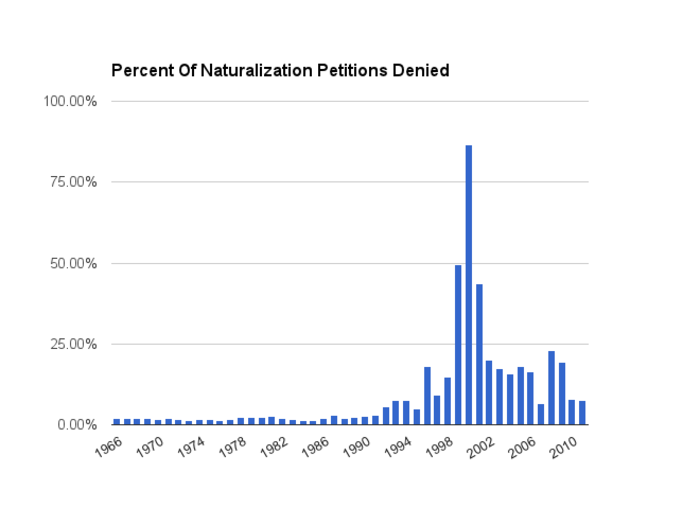
The vast majority of people who obtain permanent residency — "green cards" — are relatives of U.S. citizens. Since at most 7 percent of green cards can legally come from a single country, it's difficult for skilled professionals with no ties to the U.S. to get permanent residency
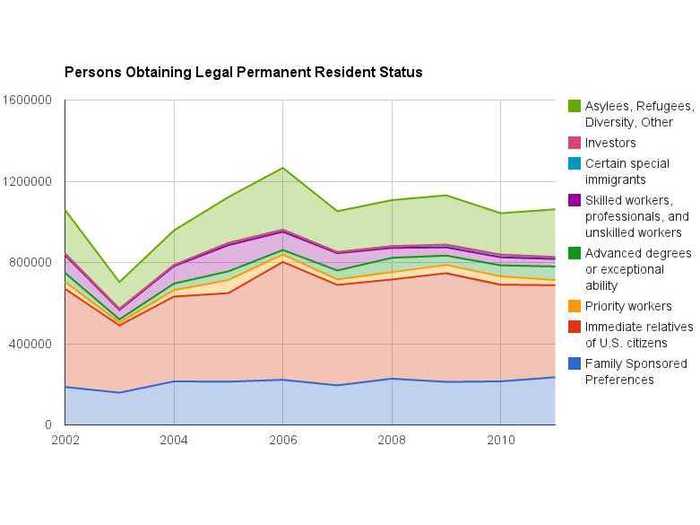
As a result, the nation is having trouble getting high skilled workers into the U.S. The L-1B visa allows companies to bring people with "specialized knowledge" like engineers and programmers into the U.S. Denial rates have jumped since the 1990s.
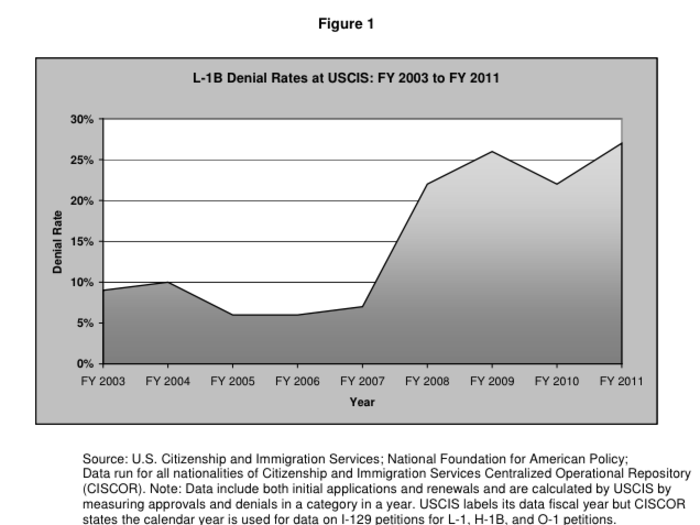
Requests for Evidence, which delay the L-1B application process, have also become the norm when in the past they were the exception.
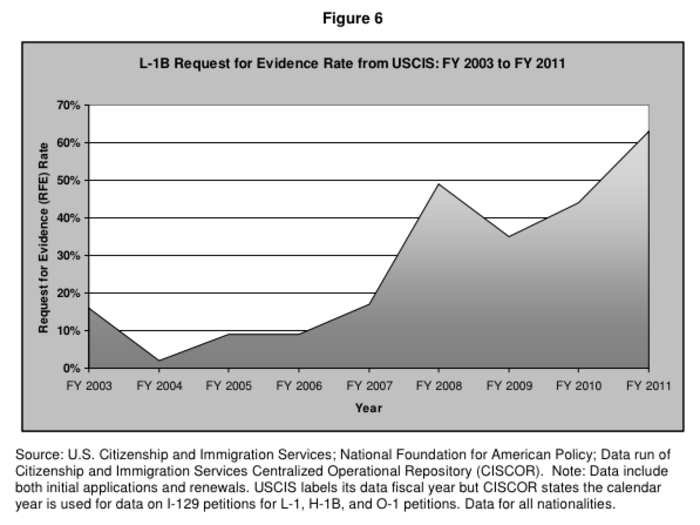
Suffering more than many other groups are specialists from India who see widespread visa petition denial because the nation produces a large volume of highly trained and educated specialists.
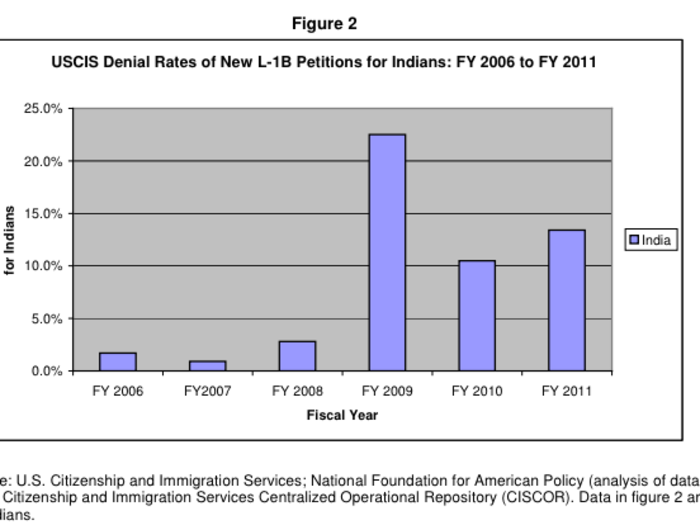
These stats show how hard it is to develop a working solution to unauthorized immigration.

Advertisement